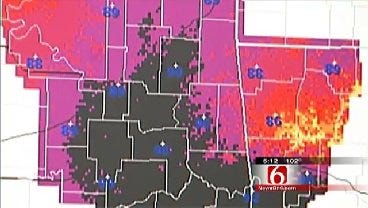ORU Professor Develops New Formula To Help Measure Heat
The Wet Bulb Globe Temperature is nothing new. But the only reasonable way to measure it was through a costly piece of equipment. That's where an ORU professor stepped in.Tuesday, July 5th 2011, 3:43 pm
Mike Grogan, News On 6 Meteorologist
TULSA, Oklahoma -- Without a doubt, this summer is a true sizzler. We've become all too familiar with the Heat Index, but that can only tell us so much.
For those who spend a lot of time outdoors, an even better number to monitor the heat is the Wet Bulb Globe Temperature, or the WBGT.
"It's really based on the human impact and what's happening to your body, and it accounts for sun, wind, and temperature, not just the heat and humidity," Steve Piltz, with the National Weather Service, said.
Dr. Vince Dimiceli, a math professor at Oral Roberts University in Tulsa, took a very sophisticated formula and simplified it to an equation that the Weather Service now uses on their website.
"Based on these factors, we can plug those numbers into this simple equation, and get a good estimate, within a half of a degree," Dr. Dimiceli said.
The WBGT Index is nothing new; the military created it in 1957. However, the only reasonable way to measure it was through a costly piece of equipment.
That's where Dr. Dimiceli stepped in.
The index follows a temperature scale, but the color-categories found on the NWS website indicate how much time you can spend safely doing outdoor activities. The darker the color, the more careful you should be.
"If you're working out in the sun, don't spend more than 15 minutes working in the sun, because it could cause some bad physical effects," Dr. Dimiceli said.
The military and many athletes base their activities on the WBGT.
"Runners, from what I understand, they don't tend to go on these longer marathons when they start to get above about 85 on that index. The Marines, like I say, for example, stop all their Basic Training activities at around 90," Piltz said.
So why not just use the Heat Index?
"Some days the Heat Index is a little bit high, but if there's a good wind and some clouds, it's still safe enough to be out," he said.
"There are other days where the Heat Index might only be around a hundred, and you're starting to see EMSA transport people to the hospital, so maybe it'll help us understand those days."
The National Weather Service in Tulsa is the first place to use this in their daily operations.
More Like This
July 5th, 2011
September 29th, 2024
September 17th, 2024
Top Headlines
December 11th, 2024
December 11th, 2024
December 11th, 2024












